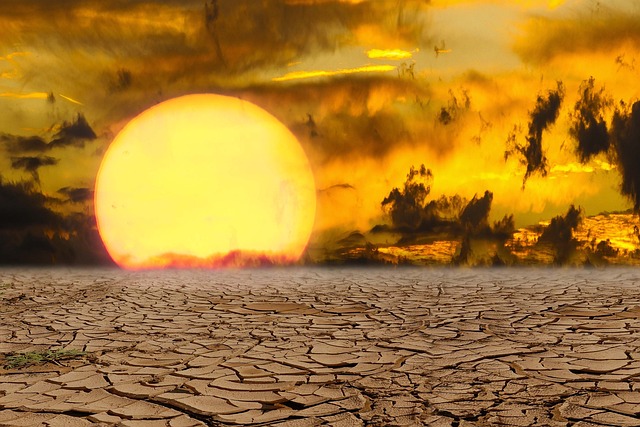Current Environmental Issues In Pakistan:
Aside from the more common environmental issues of air pollution, water pollution, smog, illegal and improper waste dumping in numerous landfill sites, along with increasing urbanization that is readily reducing cultivation space. This results in more deforestation. The consequences of that can be felt widely on ecosystems, wildlife, habitats, flora and fauna and ultimately on the atmosphere as the air quality is effected.
Related: List of Environmental Hazards and Challenges In Pakistan
Also related: Sustainable Green Living In Pakistan – Combat Climate Change
List of 10 Current Environmental Issues in Pakistan:
The most pressing environmental issues currently ongoing in Pakistan are mentioned below:
- Climate Change: The list begins with the most pressing issues and the root of all issues- climate change. Even though Pakistan emissions are less than 1% of all global emissions- only 0.9% in fact. However, it is unfortunate that Pakistan is one of the most vulnerable countries to face the negative effects of Climate Change. This will not only mean increased local and regional temperatures but also increased irregular weather patterns resulting in aggravated extreme natural events like Monsoon floods, locust attacks due to changes in habitat or because of range shifts. Climate change is responsible for heatwaves, GLOFs, floods, cyclones, and all other events that Pakistan did not suffer prior to the increase in global mean temperature.
For further information, check out: Effects of Climate Change on Monsoon Season of Pakistan
and, Effects of Climate Change on Sindh Province of Pakistan - Heatwaves: As mentioned above, heatwaves are also due to climate change and are primarily concerned with increasing temperatures and longer summers. Rainfall levels have become low in regions where summers were already quite hot and the frequency of heat waves has doubled in the past 3 years alone. Such as Multan, Jacobabad, Nawabshah, Khanpuri to name a few. The 2022 heatwaves in India and Pakistan were the hottest to date and made headlines. It resulted in 90 casualties due to dehydration and heat strokes as well as unconsciousness in Pakistan in May 2022.
Also check out: Expected Heatwaves in Summer Months 2023 in Pakistan - Water Scarcity and Droughts: Due to the low rainfall in the aftermath of heatwaves, Pakistan’s Southern regions suffered water scarcity and drought due to low water tables and high evaporation rate. Especially prominent in the regions of Sibi, Tharparkar and the desert regions beyond Baluchistan. This hinders the ability to grow food greatly.
Check out: Food Security and Climate Change in Pakistan
According to a report published by the Pakistan Institute of Development Economics (PIDE) this year, more than 80 percent of Pakistanis face “severe water scarcity” for at least one month each year. The report stated that Pakistan ranks 14 out of 17 countries designated as “extremely high water-risk” nations.
Also check out: Impacts of Climate Change on Water Resources of Pakistan
Related: Aquifer Vulnerability And Groundwater Quality In Pakistan - Desertification: The Extreme weather events that result in water scarcity, higher temperatures are responsible for desertification indirectly. These subsequently result in water and soil erosion due to high speed wind blowing across bare surfaces caused by disforestation for cultivation. The increasing demand for urban land and emptying rural areas mean that the grasslands or shrub lands are decreasing and eventually decreasing from many regions. Those areas or drylands which are not urbanized are overgrazed by livestock which is also detrimental since vegetation is lost if proper livestock management plan is not there and cattle eat the grass and vegetation from the root level. This results in very slow growth of vegetation once again which is difficult in a water scarce region.
This land degradation due to urbanization, misuse of resources has surprisingly nothing to do with climate change directly per se, but is due to human activities mostly. A relatively fertile land becomes redundant and useless due to not being properly utilized. - Waterlogging and Salinity: While some regions in the south suffer from water scarcity, there are other regions which suffer from waterlogging which is what happens when water tables are filled with water and are present very close to the surface (less than 1.5m in distance from the surface). Another type of waterlogging occurs in soils that become saturated with rain water or any other runoff and the water is not removed or evaporated for a number of reasons. Salinity also results from increased salt content in water and soils that make the soil unfit for cultivation due to high sodium and salt levels.
Check out: Waterlogging and Salinity in Pakistan
Water logging and salinity are a huge problem and effects the livelihood of many people as it hampers their ability to grow food. Even though major effort and initiatives have been taken to reduce and eliminate the issues however, due to operational costs and maintenance along with failure of responsible check and balance has proven to be a major setback. - Floods: Irregular monsoon events especially in Punjab and lower Punjab regions have become a cause of major concern due to the risk of flooding. As seen in the devastating Monsoon season induced floods of 2022. The lack of proper evacuation plans, communication, disaster management teams and overall incapability of dealing with the risk has made Pakistan particularly even vulnerable. Coupled with the fact that there is not enough evacuation tools and post disaster equipment like sump pumps for water removal and basic necessities for survivors. It is alarming how Pakistan has no initiatives to deal with floods.
- GLOFs: Glacial Lake Outburst Floods. These are floods that result due to glacial ice and snow melting. Pakistan has the highest number of glaciers outside the poles. In the regions of Hindu Kush, Karakorum and Himalayas, in the Northern regions of Pakistan where temperatures used to be cooler than it is now. There are a total of 3044 Glacial lakes in Pakistan specifically in KPK and Gilgit Baltistan and all are undergoing various stages of melting rapidly. More transboundary air pollution deposits particulate matter and other pollutants on the tips or surfaces of these Glaciers which upon melting cannot be used as potable water further contributing to water scarcity in these areas. Whereby the mountain communities could use this glacial melt for drinking and cooking purposes now even that is dangerous.
Even though an advanced warning and radar systems for glacial melting has been installed in across 200 valleys in Gilgit Baltistan to assist locals for building resilience in the event of a disaster and help save lives no further action has been taken to mitigate the root cause of GLOF.
Related: Third Pole Is Melting – Himalaya-HinduKush-Karakoram Glacier
Conclusion:
Even though it is clear that Pakistan is not a major cause of climate change and that developed nations need to provide financial assistance to help combat it. However, it is imperative that it be guaranteed that the utilization of these funds shall be aimed at these environmental issues only and not squandered like it has been done previously.
Pakistan’s lack of resources and not taking these matters seriously is clear from the fact that in the Fiscal Year of 2023 the budget presented for the Climate Change Ministry had been reduce by almost 50% which is astonishing considering that we have just faced a major flood disaster and a looming threat of the Biparjoy Cyclone in the Northern Arabian sea that had threatened Karachi.
When we will make our environment a priority and really want to fix the impacts of climate change, only then will other nations step up to provide us with ample aid and resources.
Check out: The Drastic Need of Environmental Change in Pakistan
You may also be interested in: Effect of Climate Change on Punjab Province of Pakistan
Also check out: Effect of Climate Change On Gilgit Baltistan of Pakistan
Reference: www.pulitzercenter.org
I hope you all liked this post! Please comment below if you have any suggestions, comments, or feedback! We at #envpk love hearing from our readers! Thanks!




